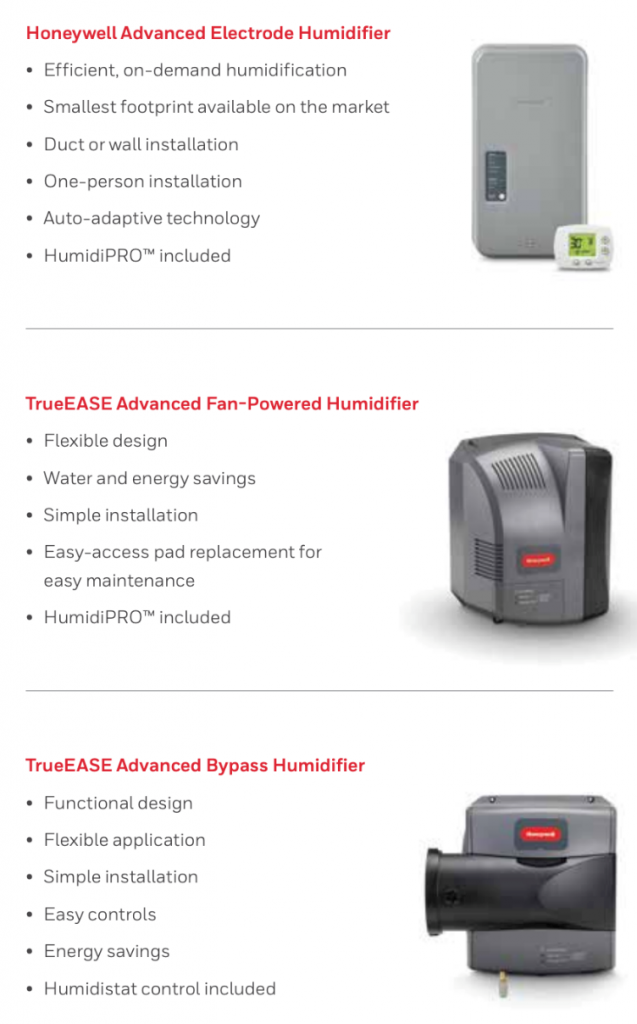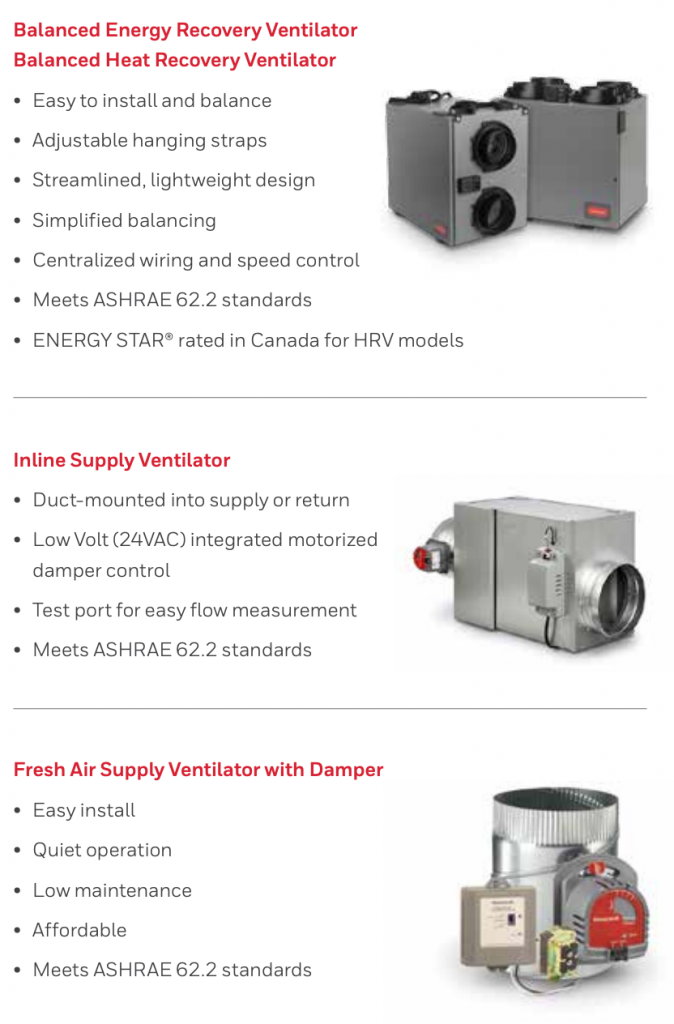
Solutions for Whole-Home Comfort and Health
Indoor Air Quality (IAQ) commonly refers to the air quality within and around buildings like homes and offices — especially as it relates to the health and comfort of building occupants. Understanding IAQ can help reduce the risk of indoor health issues and concerns. Some health impacts from indoor air pollutants may be experienced quickly, others may take years to show up. Maintaining the ideal IAQ is a balancing act. Too much or too little humidity, improper ventilation and contaminants can have an impact on the health of families and belongings in ways big and small, from dry skin to squeaky floors to heightened allergies. Protect yourself by using knowledge of your indoor environment to alleviate concerns and potential issues. Getting started is easy, read on below for helpful info, and then call Denommee Plumbing, Heating & Cooling at 978-649-8886 for a free in-home consultation or simply request Indoor Air Quality Consultation and book appointments right here on our website. We have real, proven solutions we can offer to help improve your home’s indoor air quality.
Indoor Environment Air Quality Is Important
Do you ever notice musty odors in your home? Does anyone in your family suffer from allergies or hay fever? Does there seem to be a lot of dust around the house, even though you clean often? The answer to these questions can be related to each other. Dust and odors can be signs there is something invisible affecting the air quality of your home. There can be varying reasons for these issues.
- Irritation of the eyes, nose, and throat
- Headaches
- Dizziness
- Fatigue
- Asthma may become aggravated
- Cold-like symptoms
According to the Environmental Protection Agency (EPA), indoor air can be two to five times more polluted than outdoor air. Some of the above effects due to poor IAQ may show up shortly after a single exposure, or after repeated exposure. A person’s reaction depends on their sensitivity, which obviously varies from person to person. Some people can become sensitized to biological or chemical pollutants after repeated or high-level exposures. Others may not. It’s important to note when symptoms do occur, it’s often difficult to distinguish between IAQ issues and colds or other viral diseases. If symptoms fade or are reduced when a person leaves an area, chances are that it’s something in that area causing the problem. Some effects may be made worse by a lack of adequate outdoor air coming into the building or home. They can also be made worse because of heating, cooling, or humidity conditions.
Tighter construction has an impact on IAQ
Houses are built more tightly to be more energy efficient. As a result, the lowered exchange of indoor and outdoor air has led to an increase in poor indoor air quality. Homes may be less expensive to heat and cool, but fresh air is sealed out and air pollutants, excessive humidity or overly dry conditions build up inside.
Air Cleaning
Air flowing through a whole-home air cleaner, filter or purifier has reduced levels of dust, pollen, mold spores and certain bacteria, helping improve the efficiency of the heating and cooling equipment and circulation of cleaner air throughout the home. And whole-home systems are out of sight, quiet and low-maintenance. Denommee Plumbing, Heating & Cooling are your expert source for filtration and UV products that can provide the simplest and most effective way to improve indoor air quality for homeowners.
Signs that a home needs air cleaning
- Portable air cleaners in multiple locations
- Central air conditioning
- Humid climate
- Odors caused by cooking and other sources
- Air conditioning ductwork that needs frequent cleaning
Typical installations
The air cleaner, filter or purifier should be installed where maximum air volume is circulating through the HVAC system. The best location is in the return air duct next to the blower compartment, so the air cleaner can help to keep the blower motor and evaporator coils clean. For the most efficient air cleaning, spread airflow evenly across the face of the media and choose a location that is readily accessible for filter maintenance.

Ultraviolet Air Purifier not only absorbs odors, but can help improve overall air quality, comfort and HVAC efficiency in your home. It works by using ultraviolet light to inhibit the surface growth of mold spores and certain bacteria by as much as 99 percent, in the duct system that would otherwise spread throughout your house. This same type of light has been a tried and true air cleaning solution in hospitals, restaurants and other places where clean air is important.
Save Energy and Money
Mold and mildew growing in your home’s heating and cooling system bog down the equipment, making it work harder to maintain your desired temperature. And problems can become so bad that your system needs to be professionally cleaned—which can be expensive. Ultraviolet Air Purifiers help keep coils clean, which adds to increased comfort and energy efficiency.
Dehumidification
Keeping moisture in check throughout the home
Too much humidity in a home can make living spaces feel damp and uncomfortable. Excessive moisture can also support the growth of mold and mildew — and result in musty odors. And condensation can damage surfaces. A portable dehumidifier in a damp basement or room may seem like a solution, but it’s not enough for many homes. Denommee Plumbing, Heating & Cooling have dehumidification systems that offer a whole-house solution that’s more effective and can be less expensive than putting multiple single-room units in a home. Our dehumidification systems can also be used to target specific problem areas, improving comfort while using less energy than portable humidifiers.

Signs that a home needs dehumidification
- Low set point on thermostats in hot climate
- Condensation on walls and windows
- Humidity levels above 60%
- Uncomfortable sleeping conditions
- Use of portable dehumidifiers
Typical installations
In an ideal installation, the whole-house dehumidifier should draw air from the central part of the home and return it to isolated areas such as bedrooms, den, utility room or family room. The unit can draw from the return and dump into the supply if needed and it can be installed in a variety of locations to meet specific needs. The control should be installed where it can accurately sense relative humidity. Our whole-house dehumidifiers can also be used to remove moisture from specific problem areas.
Humidification
Adding humidity where and when it is needed
Proper humidity throughout a home reduces the risk of damage and cracks to a home’s woodwork, flooring, musical instruments and paintings. The right level of humidity may support health as well; studies suggest that air with higher levels of humidity may decrease the survival of certain viruses and their transmission rates. We offer an extensive line of professionally-grade and installed Whole-House Humidification solutions including steam, fan-powered and bypass models, as well as quality service replacement parts such as inline scale and sediment filter and replacement pads.

Signs that a home needs humidification
- Families with babies and young children
- Extensive wood furnishings or flooring
- Art collections
- Musical instruments
- Uncomfortable temperatures in the winter
- High utility bills
Typical installations Flow-through humidifiers are installed on either the supply plenum or return duct, based on the application. Steam humidifiers are mounted directly to the duct or remotely to provide humidity on demand. Controlled by a humidistat, whole-house humidifiers introduce moisture directly into the ducts airstream to evenly distribute humidity throughout the home.
Ventilation
Bringing fresh outdoor air inside
Today’s building regulations require homes to be built tightly for energy efficiency. But that tight construction can restrict the intake of fresh air and trap potentially hazardous indoor air pollutants such as humidity, dry air, wood material off-gassing, cleaning agents, radon, carbon monoxide and carbon dioxide and odors from household activities. These new codes have increased the need for mechanical ventilation. Our ventilation systems create efficient air exchange, so you can enjoy fresher air and the benefits of energy efficiency.

Signs that a home needs ventilation
- Excessive dust
- Too much humidity
- Lingering cook odors
Smart Technology
Connect homes with smart technology for all-around comfort control
We offer our customers Honeywell RedLINK technology —the robust platform behind a full suite of wireless-enabled thermostats and accessories — allows you complete, customized comfort control. We can help you choose the elements that make sense for your home. Enjoy easy monitoring and management of in-home environmental conditions. Call us at 978-649-8886 for a free in-home consultation or simply request Indoor Air Quality Consultation and book appointments right here on our website.
